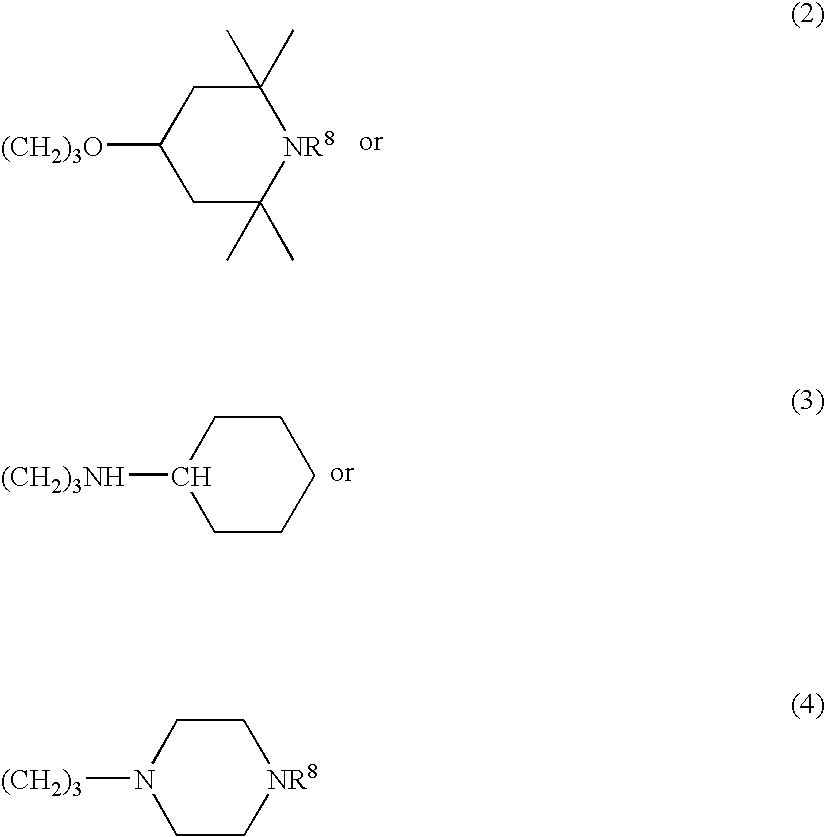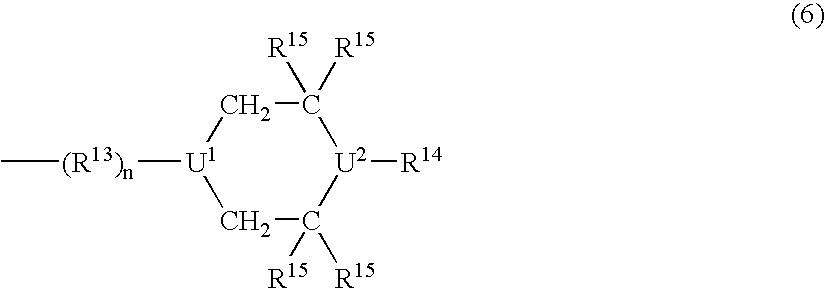Fabric softener compositions
a technology of compositions and fibers, applied in the preparation of detergent mixture compositions, detergent powders/flakes/sheets, detergent compounding agents, etc., can solve the problems of heavy stuffiness, poor water or sweat absorption capacity of fabric materials and wearers of clothes made of synthetic fibers unavoidably have an unpleasant feeling of heavy stuffiness, etc., to achieve excellent strength and not prone to tear or separation
- Summary
- Abstract
- Description
- Claims
- Application Information
AI Technical Summary
Benefits of technology
Problems solved by technology
Method used
Image
Examples
example 2
Hydrbphilicity
The formulated rinse conditioners (see Table 1) are applied according to the following procedure:
Woven cotton swatches of size of 50 cm by 40 cm are washed together with ballast material (cotton and cotton / polyester) in a AEG Oeko Lavamat 73729 washing machine maintaining the washing temperature at 40° C. The total fabric load of 1 kg is washed for 15 minutes with 33 g of ECE Color Fastness Test Detergent 77 (Formulation Jan. 1977, according to ISO 105-CO6). The rinse conditioner formulation as described in Table 1 is applied in the last rinse cycle at 20° C. After rinsing with the formulation the textile swatches are dried on a washing line at ambient temperature.
Evaluation of Hydrophilicity
The water absorption of fabrics treated with the test samples is measured by the wicking test. Test strips are fixed to a frame and dipped about 1 mm deep in a colored aqueous solution. The rise of water in the strips is measured after twenty minutes. Water absorption of fa...
PUM
| Property | Measurement | Unit |
|---|---|---|
| temperature | aaaaa | aaaaa |
| temperatures | aaaaa | aaaaa |
| hydrophilicity | aaaaa | aaaaa |
Abstract
Description
Claims
Application Information
 Login to View More
Login to View More - R&D
- Intellectual Property
- Life Sciences
- Materials
- Tech Scout
- Unparalleled Data Quality
- Higher Quality Content
- 60% Fewer Hallucinations
Browse by: Latest US Patents, China's latest patents, Technical Efficacy Thesaurus, Application Domain, Technology Topic, Popular Technical Reports.
© 2025 PatSnap. All rights reserved.Legal|Privacy policy|Modern Slavery Act Transparency Statement|Sitemap|About US| Contact US: help@patsnap.com



